


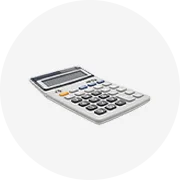
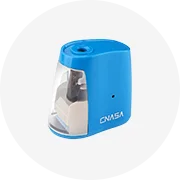
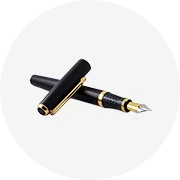
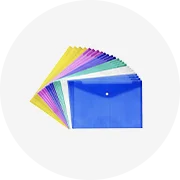
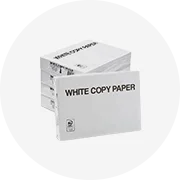
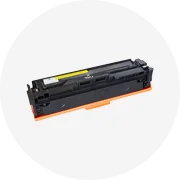
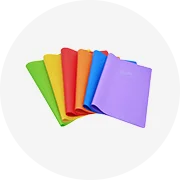
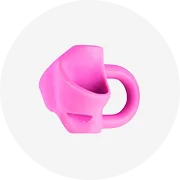
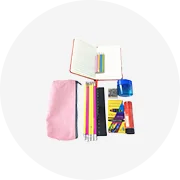
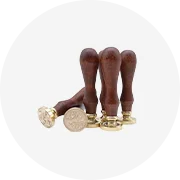
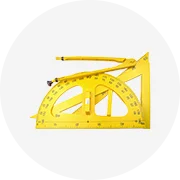
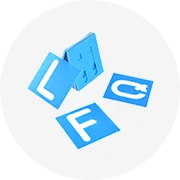
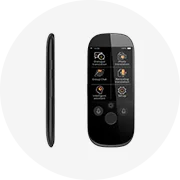
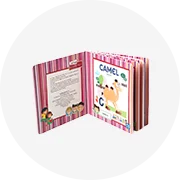


In an era where the written word is as much about presentation as it is about content, the role of hardcover binding cannot be overstated. The journey from ancient scrolls to the sophisticated hardcover books we see today is a testament to the evolution of bookbinding—a craft that has grown in complexity and elegance. As we delve into the world of hardcover binding machines, we uncover the intersection of tradition and technology. These machines, once the preserve of large-scale publishers, are now revolutionizing production lines across the industry, offering unprecedented speed, efficiency, and quality. This article explores the transformative impact of industry-leading hardcover binding machines, guiding businesses through the nuances of selecting the right equipment to elevate their production capabilities.
The art of bookbinding has evolved significantly from ancient times when texts were written on scrolls stored in cubbyholes akin to a wine rack. The transition from scrolls to the codex format marked a pivotal moment in the history of bookbinding. Early codices, made from materials like papyrus or vellum, were bound between hard covers, with pages folded and sewn onto cords attached to wooden boards and covered with leather.
This evolution continued as the codex-style book, invented in the Roman Empire during the 1st century AD, began to replace wax tablets and scrolls by the year 300 AD. By the 6th century, the codex had completely supplanted earlier writing mediums in the Western world. The introduction of the printing press in the 15th century further revolutionized bookbinding. Although the printed book increased the number of books produced, it did not immediately change the styles of binding, except for the reduced use of vellum.
Medieval bookbinding featured leather covers with intricate tooling, blind stamps, and sometimes metal furniture. The technique of fixing gold leaf under tooling was adopted from the Islamic world, leading to the gold-tooled leather binding that became a hallmark of high-quality books. The arrival of the printed book and the subsequent increase in book production did not alter these binding styles significantly, although it did lead to a decline in the use of vellum.
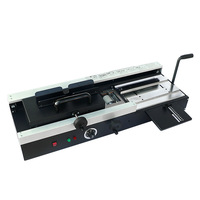
Exploring the realm of hardcover binding, one encounters various machines designed to streamline the process of creating durable and aesthetically pleasing books. These systems cater to different production needs, with some being suitable for larger operations, while others offer versatility for smaller or more varied projects. Additionally, there are specialized machines for creating custom hardcovers. A different approach combines durability with a clean, professional finish. Each machine brings its own set of features to enhance a production line, from the speed and ease of binding to the quality of the finished product. The introduction of such equipment into a business can significantly impact productivity and the quality of hardcover books produced.
The marketplace offers a diverse range of hardcover binding machines, catering to various production needs. Among the selection, machines that balance automation and user control are ideal for medium-scale operations. For businesses looking at full automation, there are machines that streamline the process of creating hardcover books, albums, and notebooks, enhancing efficiency. The cutting-edge options are suitable for high-precision binding tasks.
Manual options are also available, which utilize manual hot melt glue application, offering a hands-on approach for small-scale productions or bespoke creations. For those seeking versatility, there are machines that provide flexibility in cover forming and binding, accommodating different book sizes and thicknesses. Additionally, there are specialized functions for specific binding styles and finishes.
In terms of adhesive technologies, hot melt glue machines are prevalent for their strong bind and quick setting times. These machines are designed to handle a range of paper sizes and types, ensuring a durable finish for a variety of hardcover products. Each machine type on Alibaba.com is designed to meet the specific needs of different production scales and operational preferences, ensuring there is a machine to suit every business requirement.
When scouting for hardcover binding machines, certain key features stand out for their importance in enhancing productivity and ensuring durability. A prime feature to consider is the binding capacity, which varies from machines capable of handling up to 300 sheets to those that can manage up to 600 sheets in a single cycle. The binding cycle time is also crucial, with some machines offering quick 30-second cycles, suitable for fast-paced environments.
Operational ease is another significant aspect, with some machines boasting one-touch operation and built-in cooling racks, which streamline the binding process. Energy-saving modes are an additional benefit, contributing to a more sustainable operation. The dimensions and weight of the machine may affect its portability and footprint in your workspace.
For those requiring versatility, machines that are compatible with a wide range of thermal covers offer an advantage, allowing for flexibility in binding different document types. The binding throat size and the machine's ability to bind both hard and soft covers are features that provide an indication of the machine's versatility and capacity.

Hardcover binding machines bring a significant enhancement to production lines, especially in the context of digital printing environments. The transition to automated binding solutions is pivotal for accommodating the industry's shift towards ultra-short run lengths. These advanced machines are designed to streamline the process of creating durable and high-end hardcover books, which are traditionally associated with manual and time-consuming methods. The integration of such equipment allows for a touchless workflow, which is essential for improving the efficiency of producing hardcovers in small quantities.
The capabilities of modern binding machines, such as the automated casing-in lines, enable the marrying of book blocks and cases with precision, producing high-quality hardcover books at increased speeds. This automation is crucial for keeping up with the demands of on-demand book printing, where the ability to adjust to varying book thicknesses and spine widths without interrupting the production flow is a valuable asset. Furthermore, the adoption of high-speed production inkjet technologies presents more opportunities for digital run lengths, enhancing the value of binding techniques and the overall production line.
Moreover, the advancements in binding technology have addressed the limitations of traditional case binding by reducing the need for extensive equipment and investment. This makes the production of hardcover books more accessible and cost-effective, even for those looking to produce premium quality books with additional features such as ribbons, headbands, and foil stamping. The result is a more efficient production line capable of delivering hardcover books with both aesthetic appeal and structural integrity.
Modern binding machines, particularly those designed for hardcover binding, incorporate advanced materials and technology to enhance durability and performance. For instance, some machines are constructed with metal parts, ensuring longevity and consistent operation. The incorporation of hardened steel punching pins is a testament to the durability of these machines, as they remain sharp for extended periods, allowing for clean punches through various materials.
The technology integrated into these systems often includes electrically powered elements such as coil inserters and crimpers, which facilitate the binding process. Adjustable rollers in the coil inserters allow for fine-tuning based on the coil diameter, which is crucial when working with different document thicknesses. This adjustability ensures a precise and secure bind for a range of hardcover book sizes.
Additionally, the presence of disengageable punching pins in these machines highlights the technological advancements tailored to user needs. This feature allows for the customization of punch patterns to accommodate non-standard document sizes, preventing partial holes and ensuring a clean, professional finish. The use of oval-shaped holes, rather than standard round ones, demonstrates an understanding of the practical needs of the binding process, making coil insertion smoother, especially for thicker books.
These innovations in hardcover binding machines not only improve the efficiency of the binding process but also contribute to the final product's quality. The ease of operation, with features like foot pedals for hands-free control, underscores the ergonomic considerations taken into account in modern machine design. Such features exemplify the marriage of robust materials and cutting-edge technology in the realm of hardcover binding equipment.
Upgrading to advanced hardcover binding equipment brings several benefits, enhancing the durability and versatility of printed products. Modern binding techniques not only provide superior strength, allowing books to last for years, but also offer flexibility, enabling books to lay flat without damage.
The versatility of advanced machines allows for a wide range of print projects. From professional textbooks to vanity coffee table books, the right equipment can cater to diverse binding needs, ensuring each print stands out and is preserved for a lifetime.
Furthermore, the uniqueness of hardcover books is elevated with advanced machines, which offer a plethora of finishing options. Customization features like foil stamping, die cutting, and custom leather work enable the creation of truly unique products that capture attention.
Lastly, the superior quality achieved through advanced binding machines ensures a sophisticated finish, contributing to the product's longevity and collectible nature. This quality not only appeals to book lovers but also adds value to the printed product, making it a cherished item for various occasions.
When selecting the right hardcover binding machine for your business, it's essential to consider your specific needs and the capabilities of the equipment. If your projects require versatility and you're drawn to the aesthetic of twin loop wire bindings, it's important to note that certain machines can accommodate this style with the appropriate accessories. For instance, Spiral-O Wire, which is compatible with the hole pattern of plastic comb binding machines, could be a viable option. This wire, available in various colors and sizes, allows for the use of twin loop wire bindings without the need for a complete system overhaul.
However, the key is to ensure that you have the necessary tools to close the wires, which may mean investing in a twin loop wire closer if your current machine lacks this feature. For businesses with larger volumes, this could be a justified expense, but for smaller operations, a dedicated twin loop wire binding machine with a 3:1 pitch might be more cost-effective. It's crucial to assess the volume of binding work, the desired presentation style, and the budget at hand. Consulting with experts or sales representatives can provide insights into the most suitable binding supplies and equipment for your unique requirements, ensuring that you make an informed decision that aligns with your business's operational needs and goals.
The march of progress in the realm of hardcover binding machines is a narrative of innovation and refinement. From the evolution of bookbinding techniques to the latest advancements in machine technology, this article has traversed the landscape of hardcover production. We've seen how modern machines blend robust materials with cutting-edge technology to enhance both the efficiency of the binding process and the quality of the final product. The versatility of these machines caters to a myriad of production needs, from small bespoke editions to large-scale print runs, ensuring durability and a sophisticated finish. As businesses consider upgrading their equipment, the insights provided here serve as a beacon, illuminating the path to making informed decisions that align with operational goals. Whether it's through the precision of fully automated systems or the artisanal touch of manual machines, the right hardcover binding equipment is a pivotal investment in the future of book production—a future where every page turned is a testament to the enduring legacy of the bound book.